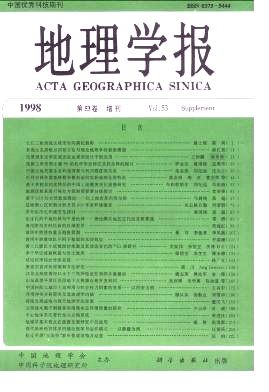Yin Guokang
The research area is the sandy and coarse sediment area of the middle Yellow River with some 13×104km2 of area, of which 73 per cent are situated in loess hill and gully region. Based on some 10 000 observational data from 21 drainage basins in this region from the early part of the 1950s to 1993, by statistical analysis on temporal and spatial variations in sediment yield runoff precipitation, the following understandings are obtained: 1. The distributions of precipitation, runoff, and sediment load in the area within a year are very concentrated, especially sediment load. The sediment yield during flood season (from June to Supt.) makes up over 97 per cent of the annual total. In addition, the sediment yield in flood season is always concentrated in a few heavy storms. Consequently, the study of sediment yield for this area should emphasize on the mechanism of storm effects on runoff and sediment yield. 2. Though the annual sediment yield in this region often concentrates in a few heavy storms, what time and where to present such a storm and its intensity and process are all trandom. Furthermore, the effects of land surface characteristics in runoff and sediment yield are of comlexity in temporal and variety in space so the process of producing sediment is more changeful. As a result the fluctuation amplitude of sediment yield for the same interval of time may arrive at several tens, so far as to more than two hundreds. 3. Since the 1970s, owing to the fact that the climate in the middle Yellow River has tended to drought and the regulation level has been gradually improved, both annual runoff and sediment yield have continuously decreased. The mean annual precipitation in the study area in the 1970s, as compared with that during the period of 1954 ̄1969, decreased by 9 4%, and the annual runoff and the annual sediment discharge on average decreased by 18 5% and 23 8% respectively. And during the 1980s, they decreased by 14 4%, 35 6% and 58 4% respectively. In the first four years of the 1990s, they respectively decreased by 15 6%, 39 5% and 54 8%. 4. By statistical analysis it is shown that the mean annual runoff in the region in the 1970s, as compared with that in the period of 1954 ̄1969, decreased by 12 6×108m3, of which 42 5% were caused by climatic fluctuation and the other 57 5% were caused by man’s activity. And in the 1980s the mean annual runoff decreased by 24 4×108m3, of which 39 1% wre caused by the climate fluctuation and the other 60 9% were the man made. In the aspect of decrease in sediment load, the mean annual sediment discharge in the 1970s, as compared with that in the period of 1954 ̄1969, decreased by approximately 3×108t, of which 68 5% were caused by the climatic fluctuation and the other 31 5% were the man made. And during the 1980s the mean annual sediment discharge decreased by about 7 3×108t, of which 48.8% were caused by the climatic fluctuation and the other 51 2% were due to man’s activity. It manifested that no doubt there was a phenomenon of increase in sediment yield caused by some man’s activities such as large scale opencut, road engineering, city and town construction etc. in the region in recent years, but the water and soil conservation measures, in addition to an offset to the nagative effect, still demonstrated the notable effectiveness in decreasing runoff and sediment yield. And yet, it should be pointed out that owing to the water and soil conservation measures being easily ageing and subjected to a man made interference, the function of water and soil conservation measures would gradually weaken. For this reason, from now on, how to strengthen the management and safeguard of the regulation measures is of vital importance. 5. As it is seen from the historical sequence of climatic variation in the region, the catastrophic storm flood was not rare. For example, the storm flood occurred in the area during Sept.20 ̄Oct.06, 1662 caused the largest flood in history in north China.
